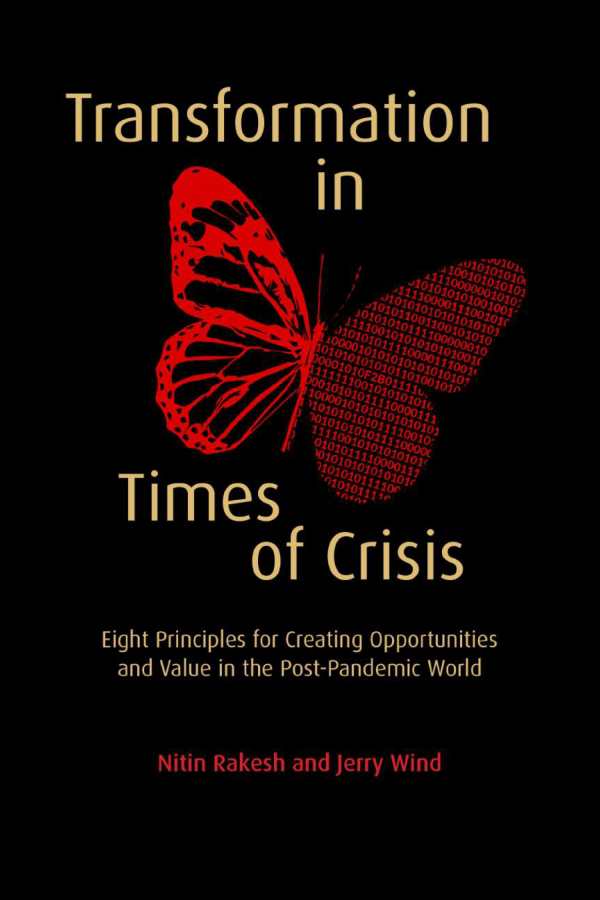Transformation in Times of Crisis
Transformation in Times of Crisis is an essential business book for organizations that are seeking to remain competitive in a digitally accelerated marketplace.
Written with the Covid-19 pandemic in mind, Nitin Rakesh and Jerry Wind’s business guide Transformation in Times of Crisis suggests eight principles for creating opportunities and adding value during and after seismic industry changes.
Providing clear instructions from the outset, the book begins with a succinct summary of its sections and topics. These include a detailed discussion of the eight principles, the framework for the book’s implementation strategy, and ten tools for putting the book’s suggestions into practice. Individual chapters address topics like reimagining and reinventing a business’s approach to its customers and stakeholders, developing speed and agility, and methods of innovation and experimentation.
Concerned with reshaping negative perceptions and discussions of economic destruction, the book’s positive, repeated emphasis on changing mental models, adapting to the acceleration of digital disruptions, and discovering opportunities in crises function like epiphanies. The text declares that the rising stars of the pandemic era, including companies in telemedicine and involving vaccination and testing, are models for such change; their successful qualities are highlighted for personal emulation.
Data from a wide range of resources and reports is included, and helps to highlight companies that successfully transformed—as well as some that perished. The book’s examples include arts organizations that expanded their online collections and programs, and luxury goods companies that shifted to produce in-demand hand sanitizers. On the flip side, references to “blinkered and failed” legacy companies serve as wake-up calls to companies without the vision, willingness, or ability to adapt.
Clearly labeled and conceptualized graphics are ably used to visually distill the steps required during the transformation process. One effective representation of an implementation model reveals the connection and cyclical forces of interrelated factors, and uses directional arrows to connect ten elements at play—like developing awareness of threats and opportunities, challenging revenue models, and getting funding.
In the book’s calls to take action, reminders of the ways that Covid-19 changed the world are used to urge companies and leaders to equip themselves for future challenges, and to avoid becoming irrelevant. Some of these recommendations involve developing safeguards against others’ unethical behavior and planning for the future. These targeted points prompt thought about areas requiring improvement; they are a good starting point for the hard work needed to make adjustments.
Sharing concrete ways for companies to adapt to the post-pandemic world, Transformation in Times of Crisis is an essential business book that’s concerned with sparking change in organizations that are seeking to remain competitive in a digitally accelerated marketplace.
Reviewed by
Andrea Hammer
Disclosure: This article is not an endorsement, but a review. The publisher of this book provided free copies of the book and paid a small fee to have their book reviewed by a professional reviewer. Foreword Reviews and Clarion Reviews make no guarantee that the publisher will receive a positive review. Foreword Magazine, Inc. is disclosing this in accordance with the Federal Trade Commission’s 16 CFR, Part 255.

